AGER Group's Winning Kaohsiung Port Station Proposal
By Bustler Editors|
Wednesday, Aug 3, 2011
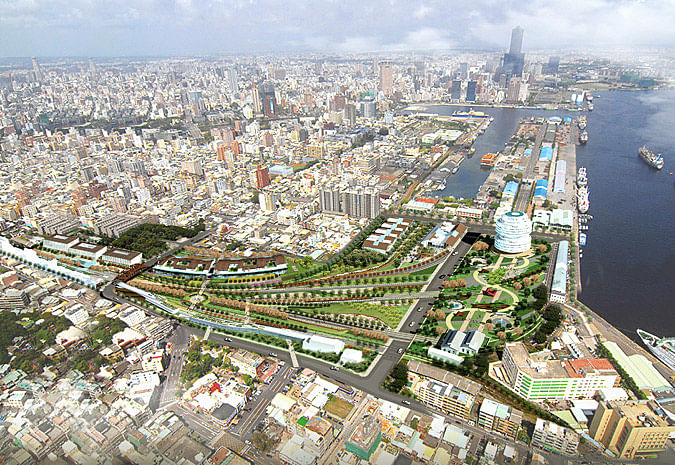
Related
We recently published one of the two winning entries to the Kaohsiung Port Station Urban Design competition by De Architekten Cie. Here is now also the second of two entries that managed to win the jury's highest praise, the Excellence Award, by AGER Group’s Boston Studio. The team was led by Jessica Leete; team members included Thomas Paine, Molly Huang, Albert Chung, Winnie Lai, Shan Shan Lu, and Claire Ji Kim.
The international competition was initiated by the city government of Kaohsiung, Taiwan to transform the derelict site of the old railyards and port station from a barrier between two important areas of the city into a connective piece of the urban fabric.
Project Description by the Architects:
The 15.42 hectare site is located between the Hamasen and Yenchen historic commercial centers of the 1920’s and 40’s and at the intersection of three of Kaohsiung’s thriving neighborhoods home of the recent Maritime Music Center and Port Terminal competitions. The competition aimed at transforming the historic rail yard and port station into a new city destination, creating a progressive model for local urban renewal. The competition’s dual goals of cultural preservation and urban development are achieved in AGER’s proposal through a three phased development.
In phase one, AGER proposed three strategies to establish a new identity for the project. They include developing a transportation and industry museum, preserving key portions of the railway for public and special event use, and transforming other portions of the rail yard into an art exhibit/market and rail-scape park corridor. The corridor would be animated with outdoor sculpture, restaurants and retail in specially re-designed rail-cars, and the former sugar warehouses renovated into creative industry lofts.
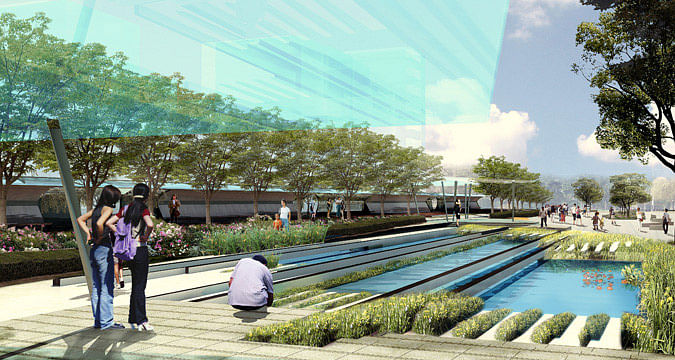
In phase two, an iconic luxury hotel with conference center and executive apartments to be designed by a signature architect is proposed to attract additional visitors to the rail-scape park corridor development and transportation and industry museum. This iconic building would aim to bring additional recognition to the project and with it, investors to phase three of the project.
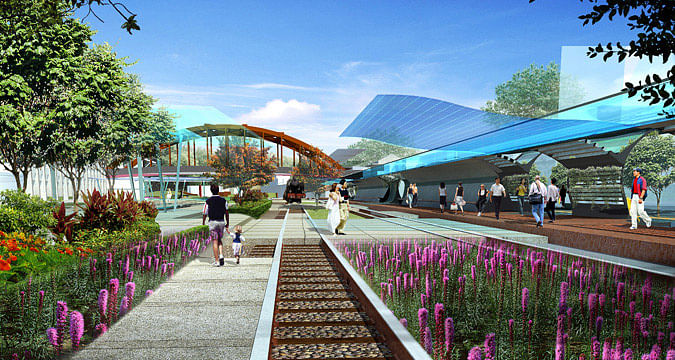
Phase three of the project, which lies at the north end of the site, is most intimately connected to the adjacent historic Hamasen urban fabric district. Consequently, Ager proposed a series of high-density mixed use residential buildings based on the Southeast Asian shophouse typology found in the Hamasen district and a high end commercial complex with public corridors and civic spaces that becomes the new hub to help bring together the existing neighborhoods.
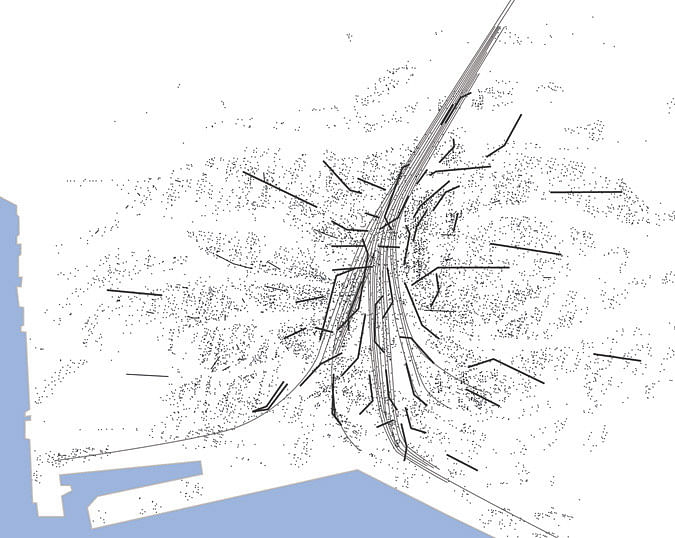
Complimenting this three phased approach, AGER studied the economic trends of domestic consumer market growth, office and retail demand, housing demand, and the expected growth of Taiwan’s tourism industry to propose a financially feasible design. Integrated in the study, was consideration of the brownfield soil conditions, building re-use, and disaster resilience to help form a sustainable strategy for the project over time.
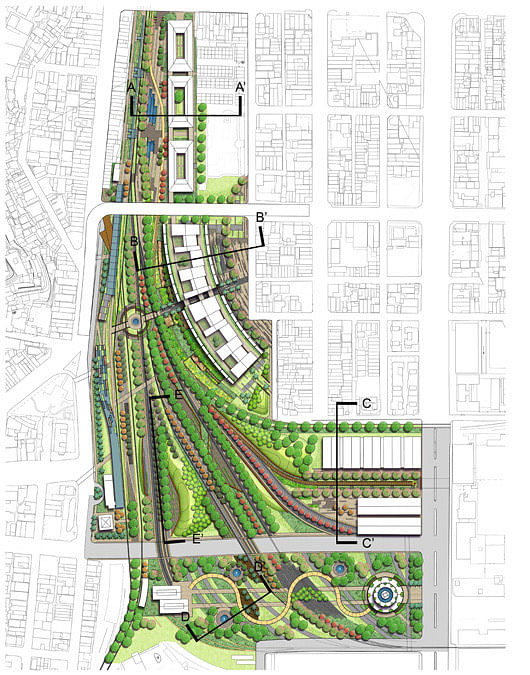
Instead of developing a final picture or finished master plan with a predetermined end result for the project, AGER’s phased strategy for the re-use of the existing rail infrastructure used a variety of components (rail, walk, wall, ramp, plaza, building, program platform/ stage, landform, planting) to direct and capture the diverse forces and flows within the site to create flexible conditions for future events and program. The seemless relationship between landscape, architecture, and infrastructure allows for an increased level of habitation, protected circulation, and incremental response to a variety of weather conditions. In particular the park corridor, the central network for movement in the project, is designed to encourage communication, exchange, and thus be adaptable over time based on behaviour and performance. It is the central stage for a series of events that are not pre-determined but rather catalyzed and amplified by the intersection of territory, varying intensities of activity and speeds of progression. From the point of view of the visitor this is a constantly shifting layered experience coordinated with their own movement.



Find more diagrams in the image gallery below.
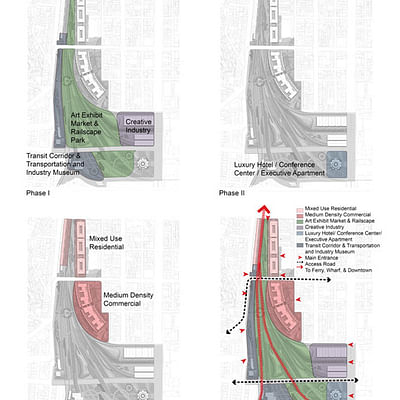
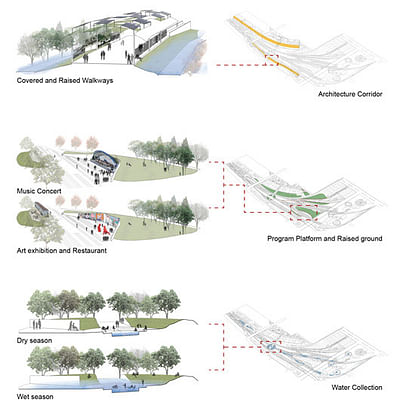
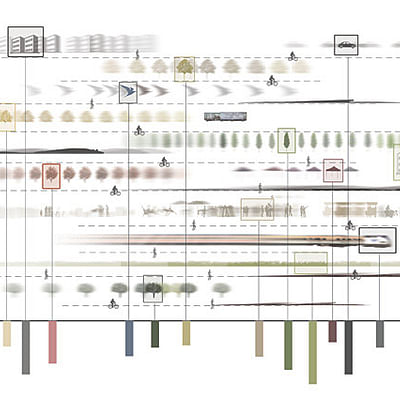

Share
0 Comments
Comment as :